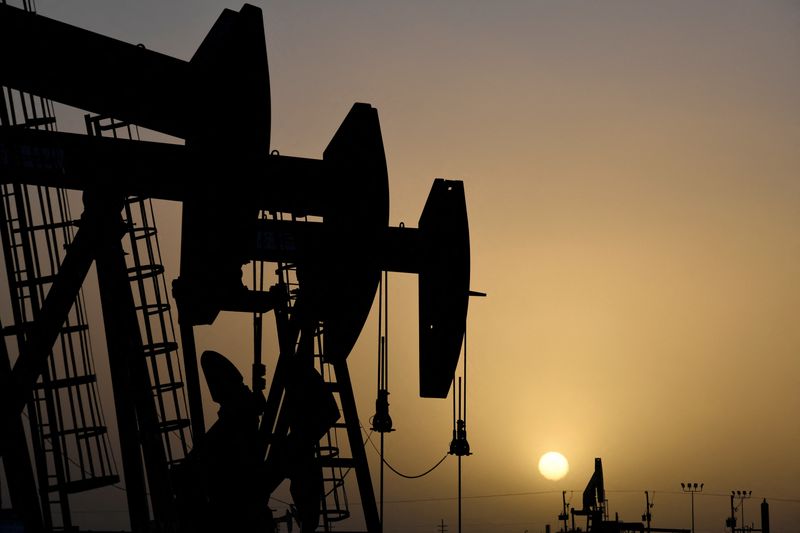By Arathy Somasekhar
HOUSTON (Reuters) -Oil prices settled about 2% higher on Thursday, as low levels of diesel inventory ahead of winter triggered buying and reversed early losses on surprisingly high stocks of crude and gasoline.
Brent crude futures for December delivery rose $2.12 to $94.57 a barrel, a 2.29% gain. U.S. crude rose $1.84, or 2.1%, to $89.11 per barrel.
Distillate stockpiles, which include diesel and heating oil, fell by 4.9 million barrels in the week ended Oct. 7, the U.S. Energy Information Administration said, far exceeding expectations for a drop of 2 million barrels and bringing inventories to 106.1 million barrels, lowest since May.
That prompted investors to shrug off a surprise 2 million build of gasoline stocks and a larger-than-expected near 10 million barrel rise in crude inventories.
"The most disturbing part of the (EIA) report is that distilling inventories are so far below average. Winter is coming," said Phil Flynn, analyst at Price Futures Group in Chicago. "The market is looking at the big picture, as opposed to the short-term demand numbers that were impacted by the storm."
The U.S. Energy Secretary in August urged domestic oil refiners to refrain from further increasing exports of fuels like gasoline and diesel, adding the Biden administration may need to consider taking action if the plants do not build inventories.
The EIA warned this week that most U.S. households will pay more to heat their homes this winter. President Joe Biden said on Thursday that U.S. gasoline prices remain too high and he will speak next week about lowering the cost.
Many investors remain concerned that rising inflation will dent fuel demand. The International Energy Agency warned the global economy may go into recession.
U.S consumer prices increased more than expected last month and underlying inflation pressures continued to build, reinforcing expectations that the Federal Reserve will deliver a fourth 75-basis-point interest rate hike next month.
JPMorgan Chase & Co (NYSE:JPM) Chief Executive Officer Jamie Dimon warned that persistent and elevated inflation could spur interest rates to rise higher than 4.5%.
Also weighing on prices was a warning by the IEA that last week's OPEC+ decision to cut supply by 2 million barrels per day (bpd) may lead to a global recession.
"The OPEC+ ... plan ... has derailed the growth trajectory of oil supply through the remainder of this year and next, with the resulting higher price levels exacerbating market volatility and heightening energy security concerns," the IEA said.
The IEA downgraded its oil demand growth estimates slightly for this year to 1.9 million bpd and by 470,000 bpd in 2023 to 1.7 million bpd.

OPEC on Wednesday cut its outlook for demand growth this year by 460,000 bpd to 2.64 million bpd, citing the resurgence of China's COVID-19 containment measures and high inflation. It lowered its 2023 oil demand forecast by 360,000 bpd to 2.34 million bpd.
The energy market is under pressure as well from the U.S. dollar, which has rallied broadly, including against low-yielding currencies like the yen.